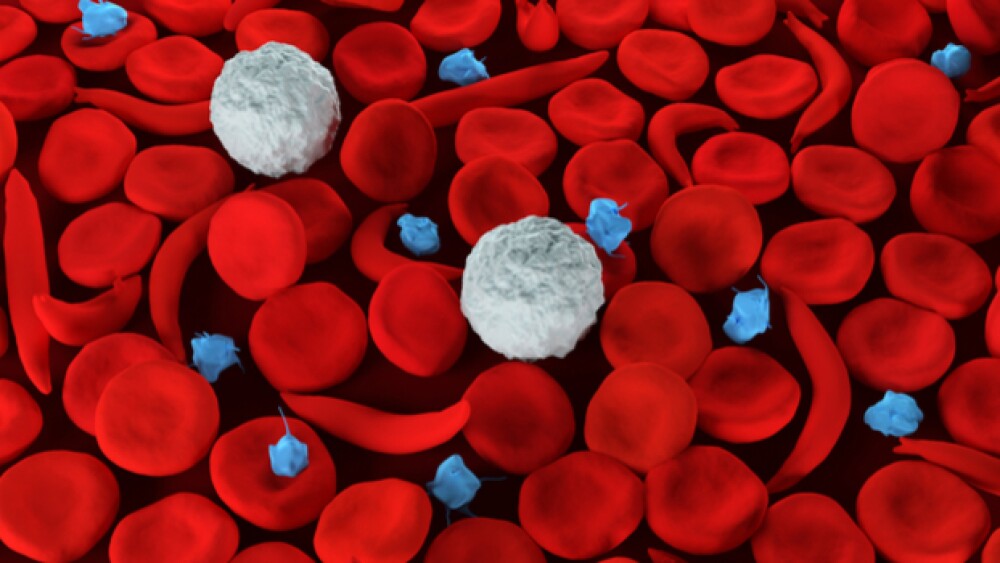Sickle cell disease is a genetic blood disorder that causes red blood cells to form abnormally, resulting in them taking on a shape like that of a sickle. This disease is incredibly debilitating and can be fatal. For thousands of years, many have suffered from sickle cell disease with little hope of it being cured.
Sickle cell disease is a genetic blood disorder that causes red blood cells to form abnormally, resulting in them taking on a shape like that of a sickle. This disease is incredibly debilitating and can be fatal. For thousands of years, many have suffered from sickle cell disease with little hope of it being cured. But now, researchers have begun making strides in this area and some promising new therapies are starting to show results.
A Debilitating Disease
Sickle cell disease is a crippling ailment that many have to suffer through their entire lives. It primarily affects those who have African ancestry, but it can also occur in people who have a Hispanic background. It is also carried down genetically, and so some people will get tested for it before having children to ensure that they don’t pass it on to their children.
The symptoms of sickle cell disease can include both acute and chronic pain in just about any area of the body, severe anemia, a damaged spleen, cough, fever, pulmonary hypertension, kidney problems, and much more.
Sickle cell disease was first discovered in 1910 by a dental student who was studying in Chicago, but it had already been present in Africa for at least five thousand years prior to being discovered in the United States. Ever since this discovery, scientists have strived to understand the disease more and, hopefully, create a cure to help all of those who suffer from it.
Searching for a Cure
The first ever reported case of a treatment curing sickle cell disease was in 1984 and was discovered by accident. A child had undergone a bone marrow transplant in order to treat the child’s acute leukemia, but it ended up curing their sickle cell disease as well. This accidental discovery would then lead to many more procedures being done to cure sickle cell disease.
However, bone marrow transplantation is far from a simple procedure and involves a rather lengthy process of finding a donor and then undergoing chemotherapy to both destroy the cells and weaken the immune system, and undergo the actual transplantation itself. Along with this difficult process, there is also a significant rate of mortality involved with bone marrow transplantation, which contributes to sickle cell patients and their families being unwilling to pursue it as an option. For these reasons and more, scientists have long tried to find a potential cure for sickle cell disease that is both easier and safer to administer.
Luckily, there have been a few advancements in treating sickle cell disease and these treatments have helped to make life for those who suffer from this disease more bearable and lengthen their lifespans considerably. But a cure has always been the ultimate goal.
Gene Therapy
Because sickle cell disease is the result of a genetic defect, the most promising treatment for curing the disease is gene therapy. If it was possible to change the gene that causes sickle cell to occur, then it would be possible to cure it.
Much research has been done on using gene therapy to cure sickle cell disease, and recently some progress has been made.
Researchers involved in one gene therapy clinical trial were able to make sickle cells switch back to normal. In order to do this, the researchers took blood stem cells from the patient and then modified the genes within so that it would induce the creation of the same kind of hemoglobin that is found in newborns (HbF). The patient then had to go through chemotherapy, similarly to bone marrow transplantation, and then received a transfusion of their modified stem cells.
Although this process has only been successfully completed once so far, it is a huge breakthrough for sickle cell research and holds a lot of promise. The researchers plan on testing it with more adults and, if those tests are also successful, then they will move onto teens and children.
If this new form of therapy proves successful by the end of this trial, then it may end up being the breakthrough cure for sickle cell disease that scientists have been searching for the past several decades, which would give hope to all the people around the globe who suffer from this debilitating disease.





